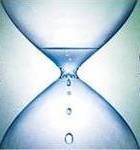 By Rady Ananda
By Rady Ananda
COTO Report
The World Bank joins Nestlé in wanting to privatize water, deeming it “extremist” to suggest that those born on this planet have a natural right to clean, potable water. Meanwhile, RT’s Abby Martin reports that the watchdog group Corporate Accountability International recently released a new analysis showing that:
“Investing in private water does not extend access and is also counterproductive for economic development. By contrast, infrastructure investment, abandoned by the corporate sector, is where real benefit can be achieved: the World Health Organization estimates more than $10 of economic benefit from every $1 invested in water infrastructure systems.”
Also commenting on the World Bank’s push for water privatization, Al Jazeera reports:
“Its project database for private participation in infrastructure documents a 34 percent failure rate for all private water and sewerage contracts entered into between 2000 and 2010, compared with a failure rate of just 6 percent for energy, 3 percent for telecommunications and 7 percent for transportation, during the same period.”
Whether public or private, water supplies are dwindling. In one shocking report from 2012, the US Defense Intelligence Agency’s Community Assessment of Global Water Security states that the global need for water will exceed the supply by 40% in the next 25 years.
“This means for every 3 people on this planet, there will only be enough water for 2 people,” says Kacper (like the ghost) Postawski. Right now, the three main sources of water in the US are rapidly running dry:
- The Ogallala Aquifer;
- Lake Mead; and
- The Colorado River.
The DIA Assessment warns that 36 states already are, or soon will be, facing water shortages. They estimate that California only has a 20-year supply of fresh water left, at current usage.
We’re facing extreme water problems that only a community-driven mindset can solve, not a for-profit corporate paradigm envisioned by the World Bank, Nestlé, Bechtel, etc.
In 2013, the University of Engineering and Technology in Lima, Peru used a neat techno-engineering trick to grab the attention of potential students. They posted a billboard that captures atmospheric humidity, passes it thru a reverse osmosis system, and stores it in a tank for locals to access for free. The five condensers involved provide about 100 liters of water a day, and the whole system cost $1,500.
Even better is the $500 system developed in Ethiopa. Using a completely different and more aesthetically pleasing design, Arturo Vittori and Andreas Vogler invented the Warka Water, a structure that uses local plants, and also extracts about 25 gallons a day. Because no special tools or fabricated materials are required, once the locals understand how to build the interweaving vase-like construction, they can repair as necessary, and pass on the technology to neighboring villages.
Smithsonian explains that every detail of the 30-foot-tall tower has a functional purpose. The outer housing is made of bamboo, strong enough to resist wind gusts while still allowing airflow. An inner mesh net collects dew, steering it toward the bottom collection container. Citing the Smithsonian and other sources, Kevin Samson also wrote a detailed piece on it.
Below is a short news piece on the structure, or you can watch a much longer presentation by the designer:
.
No one’s profiting from the Warka Water Tower, but the $500 investment in, or, rather, donation to “public infrastructure” will water thousands of people in a drought-ridden nation. This is a winning solution that far surpasses Bill Gates’ $2,200 toilet that converts dirty water to potable, and costs even more to operate, putting it out of reach of those who need it.
Weather Security Steps
The Warka design is something Californians (and those in the Southwest US) could replicate, using their own native species similar to the juncus, if possible.
 Californian Scott O’Bar has published a superb collection of data on arid plants from the US and around the world, detailing the water, soil and pH conditions needed for each species. He notes which parts are edible, and which can be used in construction or for other purposes. Alternative Crops for Drylands is a vital reference manual for any gardener or farmer living in arid conditions or threatened by drought.
Californian Scott O’Bar has published a superb collection of data on arid plants from the US and around the world, detailing the water, soil and pH conditions needed for each species. He notes which parts are edible, and which can be used in construction or for other purposes. Alternative Crops for Drylands is a vital reference manual for any gardener or farmer living in arid conditions or threatened by drought.
Most appealing about the Warka design is its localization. Instead of the feds deciding which crops will get watered during engineered droughts, people can meet at least some of their water needs independent of government.
Remember, closely tied to the US military, Monsanto, which has developed drought-resistant genetically modified seeds, is now in the weather insurance game.
Droughts, by the way, exemplify the case against monoculture mega-farms and promote the development of residential and landscape level permaculture as a weather security measure.
Cleansing What We Do Have
Not only are we facing water shortages, but also water contamination. One of the major problems with public water systems in the US is dealing with fluoridation and other heavy metals or contaminants. Though science has convincingly proved the Case Against Fluoride, about 60% of the US still poisons its people with fluoride via the public water supply.
Also, any water collected from the sky will still need to be cleansed of whatever-the-hell they’re spraying on us from above, as well as industrial atmospheric waste. Kacper is pushing a credible Japanese solution of black mica extract that removes fluoride and heavy metals from the body. Posted research supports these claims, and so I’m also pushing this product.
In Ohio State’s School of Agriculture, we learned that water is the limiting factor for most all life. But with innovative designs like the Warka tower, coupled with water cleansing systems, people can lessen that limitation by becoming more independent of corporate and government control over water.
A different version of this article first appeared at Activist Post.






Pingback: Water Liberty: How Innovation Trumps Privatization | Wake-up Call
actually Monmongrels didnt Create…ANY drought tolerant plants
what theyve done is go find Naturally existing plants like the corn they basically flogged from australian crops that already grew well in hot dry and saline soils and used that as a Base to screw round with adding Bt and RR tolerance etc.
the wheat etc thats salt tolerant developed in aus, same story they find NATURAL sources and hybridise and claim they developed a wonder plant.
Like the water harvesters:-) great rejigging of an old concept
Reblogged this on Citizens, not serfs.
Water is and will be an important factor in our lives. Jesse Ventura reported on one of the great lakes or maybe it was Lake Meade being drained of water. Trucks pumping out water and taking it some where. Ventura didn’t have that answer.
The Bush family bought the water rights of an aquifer or source of water in Brazil or in South America near Brazil. To me that is a red flag for water problems in the US.
Flint MI water was purposefully or neglectfully tainted by a greedy governor and other politicians both republican and democrat to conserve money at the health cost of the population.
Talk of de-salinization of ocean water and other ideas for water need to be seriously explored. The Warka Water sounds excellent. The Bill Gates water sounds so disgusting.
I remember once reading about an experimental house financed by McDonalds and probably others shown on TV. The house was completely self sufficient for energy and converting all used “ugh” bath water and sewage water back to drinkable. (a smaller version of cleaning river water I assume since I am not a scientist)
I never heard any more about this experiment which had to be in the late 1990’s.
I do wonder why the US Government is fining people who have ponds on their land and conserve rain water. It sounds like the water police are around the corner and this life sustaining God given sustenance will be controlled by a few. (no farms, farm animals, or even a shower or a glass of ice water) scary.